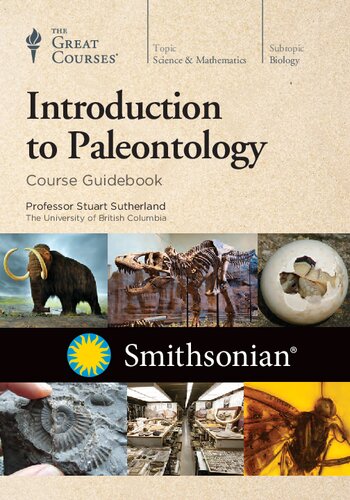

Most ebook files are in PDF format, so you can easily read them using various software such as Foxit Reader or directly on the Google Chrome browser.
Some ebook files are released by publishers in other formats such as .awz, .mobi, .epub, .fb2, etc. You may need to install specific software to read these formats on mobile/PC, such as Calibre.
Please read the tutorial at this link: https://ebookbell.com/faq
We offer FREE conversion to the popular formats you request; however, this may take some time. Therefore, right after payment, please email us, and we will try to provide the service as quickly as possible.
For some exceptional file formats or broken links (if any), please refrain from opening any disputes. Instead, email us first, and we will try to assist within a maximum of 6 hours.
EbookBell Team

4.7
66 reviewsProduced in partnership with the Smithsonian, this fascinating and visually-stunning course opens brand new doors onto the 4.54 billion-year history of our world.
How did we—not just humans, but all of life, and planet Earth itself—come to be? To find out, you need everything from paleobotany and paleogeography to paleozoology—in short, what you need is the science of paleontology. From recently exposed fossils to new theories about our ancestors, this exciting science is positively exploding with new, game-changing discoveries. In Introduction to Paleontology, you’ll see how new technologies like dispersive x-ray spectroscopy and x-ray computer tomography have joined the tried-and-true backhoe, hammer, and chisel.
Introduction to Paleontology provides a walk back in time through Earth’s history from a lifeless planet to initial bursts of life, from extinctions to life again, and ultimately to our world today. Relying considerably on the National Museum of Natural History‘s curatorial expertise and extensive collections of paleontological fossils, maps, records, and images—with more than 2,500 gorgeous and unique visuals—you’ll see the world as it’s never before been envisioned. Additionally, the expert curators at the Smithsonian helped to shape the structure and content of the course, and reviewed each lecture against the most up-to-date information and understanding of paleontology today.